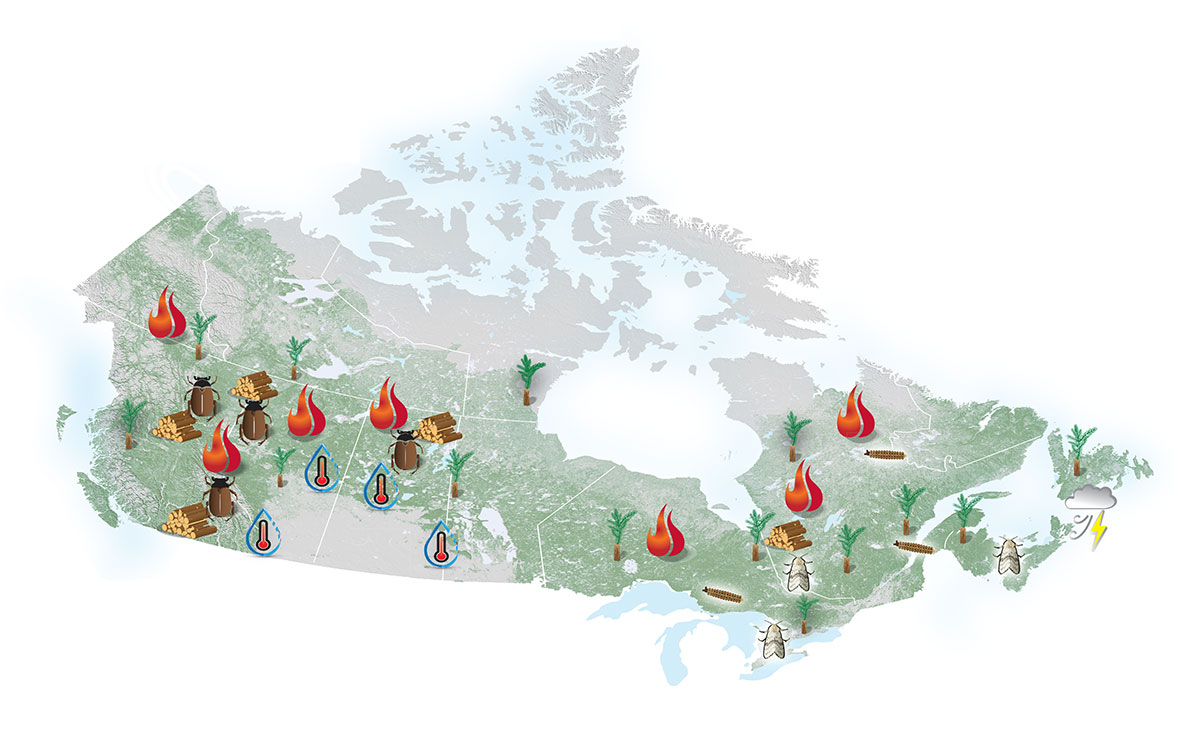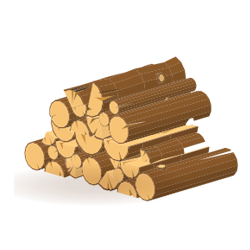The power of trees
Forests and trees are important nature-based solutions. They have long been supplying people in Canada with food and heat, controlling soil erosion, improving water quality, providing habitat for many species, and supporting biodiversity. Forests and trees stop floodwaters from reaching homes, provide shade and cooler air in the summer months, and act as snow fences in the winter to protect fields and roads. Forests provide clean drinking water to just under 50% of Canadians and support clean air for all. Forests also provide jobs for hundreds of thousands of Canadians.
Nature-based climate solutions – like planting trees – make the most of nature’s ability to combat climate change by absorbing and storing greenhouse gases, regulating water levels, protecting shorelines from storm surges and erosion, and even cooling cities. For example, after Hurricane Juan in 2003, planting of strategically placed evergreen conifers and leafy deciduous trees has restored and improved Point Pleasant Park in Halifax, Nova Scotia and has increased community resilience in the face of extreme weather events.
Nature-based solutions are actions to protect, sustainably manage, and restore natural and modified ecosystems that address societal challenges effectively and adaptively, simultaneously providing human well-being and biodiversity benefits.” – International Union for the Conservation of Nature
Nature-based climate solutions, or natural climate solutions, are actions to mitigate climate change by reducing greenhouse gas emissions, or adapt to climate change.
How Canada is using trees for nature-based solutions
The government is committed to nature-based solutions that involve forests and trees, and recognizes the many benefits they bring. Working toward our target, we already have:
Nature-based climate solutions are already helping Canada’s forests adapt to climate change

Fire proofing neighbourhoods and communities
As fire activity in many regions increases, communities and homeowners are conducting hazard assessment and following FireSmart recommendations – for example, selecting fire resistant plants with moist, supple leaves for landscaping and removing potential fuel such as dry grasses and dead branches from around homes.
Planting tree species with greater drought tolerance
Drought conditions reduce tree growth and productivity and can lead to tree mortality. Researchers are studying plan traits to identify tree species with greater drought tolerance and increased ability to reproduce following drought.
Planting trees from a wider range of seed sources to maintain productivity
A tree planted today will mature in a warmer climate and may not grow as well in that regime. Foresters are therefore planting seedlings from a range of seed sources, favouring species from southern or lower elevation populations – sources already adapted to warmer conditions.
Finding ways to use the wood from dead and damaged trees
To offset the effects of damage to forests caused by insect and disease outbreaks, forest companies are salvage-logging and adjusting wood-processing techniques to create new products from dead and lower quality trees.
Reducing damage to forests from wind storms
As temperatures warm, the early thaw and delayed freezing of soils provide less support for tree roots, making them more prone to uprooting during spring and fall wind storms in eastern Canada. Silviculture techniques such as varying the size and shape of harvest blocks and leaving patches can help reduce forest vulnerability to wind damage.
Adjusting forest harvest schedules to minimize severe insect damage
As the incidence of severe insect infestations increases, foresters can adjust harvest schedules to remove vulnerable stands of trees ahead of pest attacks and harvest insect-damaged tree to maintain overall stand health.





